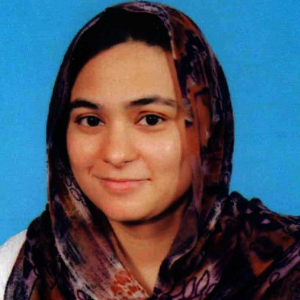Title : Preoperative and operative risk factors for conversion of laparoscopic cholecystectomy to open cholecystectomy in Pakistan
Abstract:
Introduction:The currently available literature suggests a wide range of conversion (4.9-20%) from laparoscopic cholecystectomy (LC) to open cholecystectomy (OC) despite the increase in surgical expertise. Open cholecystectomy is important as the last resort for safe surgical practice in complicated cases. Increased number of pre-operative and perioperative risk factors need to be identified to pre-empt conversion. However, there has been a significant decrease in conversion rates over the past few decades. This study was conducted to determine conversion rates in our population and to identify any significant risks for conversion.
Methods: This prospective study was conducted at the Shifa International Hospital, Islamabad, Pakistan, including 1081 cholecystectomies, performed over a two-year period from January 2017 to January 2019. Comparison of risk factors between the two groups; laparoscopic cholecystectomy (LC) group and conversion to open cholecystectomy (OC) group was done. Statistical analysis was done using SPSS 24.0.1.
Results: In our study, the overall conversion rate was 7.78%. Factors of conversion to open cholecystectomy (OC) included age ≥65, morbid obesity, diabetes mellitus, and previous abdominal surgery. Deranged alkaline phosphatase (ALP), increased total bilirubin, increased common bile duct (CBD) diameter, and multiple stones in ultrasonography showed a statistically significant association with the conversion. Per-operative findings of increased adhesions >50%, empyema gallbladder (GB), perforated GB, and scleroatrophic GB showed a higher risk of conversion too.However, there was no statistical association with preoperative endoscopic retrograde cholangiopancreatography (ERCP) to OC in our population.
Conclusion: An open cholecystectomy is a safe approach for patients with complicated gallbladder disease. No doubt laparoscopic cholecystectomy is the gold standard having its outstanding benefits. This study identifies predictors of choice for OC in addition to the decision to convert to OC. In view of the raised morbidity and mortality associated with open cholecystectomy, distinguishing these predictors will serve to decrease the rate of OC and to address these factors preoperatively.
Audience Take Away Notes:
- Laparoscopic Cholecystectomy is the gold standard since decades for cholecystectomy. Till date open cholecystectomy is considered in complicated cases for patient safety and to prevent morbidity and mortality.
- Knowing factors predicting the conversion are important to plan ahead and play safe.



